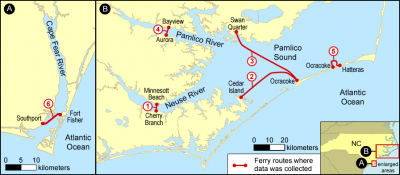Update: Gov. Roy Cooper vowed Monday to veto the budget bill, calling it “short-sighted and small-minded.” Republicans are expected to override Cooper’s veto.
RALEIGH – The state budget conference report, the final agreement between House and Senate negotiators, moved quickly to approval through both chambers last week, but not without some pointed opposition along the way.
Supporter Spotlight
When Rep. Deb Butler, D-New Hanover, one of the least-senior members of the House minority, began her comments on the budget with a strongly worded explanation on the GenX contamination issue in the Cape Fear River, she was urged by a senior colleague from across the aisle to keep debate to the budget bill.

She obliged, using the water contamination to underline that now is not the time for cuts to the Department of Environmental Quality, saying they come at a time when there is also a backlog of pending permits. There’s a need for more resources at the department not less, she said.
“This budget severely cuts their resources and eliminates personnel to the tune of $3 million dollars,” she said. “It’s grossly poor judgement to under-fund the only watchdog we have to protect our water.”
DEQ and the state Department of Health and Human Services have been investigating the presence of a compound known as GenX in the lower Cape Fear River. The Cape Fear Public Utility Authority said earlier this month it was aware of the presence of the chemical in the river water and, because it can’t be filtered with existing treatment methods, the utility’s treated water.
The chemical is a DuPont product used as a component in Teflon. Limited health information is available for the compound but it’s part of a family of chemicals with effects linked to kidney and testicular cancer, impaired fetal development and effects on the liver, thyroid, and immune system. It’s produced by the Chemours Co. at Fayetteville Works on the Cumberland-Bladen county line. The Environmental Protection Agency has no established standards for regulating the chemical in drinking water.
Supporter Spotlight
The Chemours Co. announced June 20 that it would begin to capture, remove and dispose of wastewater that contains GenX generated from production at its manufacturing plant in Fayetteville.
DEQ’s Permitting Backlog
Going into the budget conference committee discussions, the DEQ budget was one of the broadest differences between the House and Senate plans. While the House provided for some increases and only a handful of position cuts, the Senate axed 45.5 positions, most of them currently filled, and among them several eastern regional office cuts. Jobs in Washington and Wilmington and senior administrators in Raleigh are among those marked for elimination.

DEQ officials went into the budget season asking for more positions to help clear out the permit applications backlog and to shorten turnaround times, mostly in water resources permitting.
In the final bill, 16.76 positions are cut at DEQ, including at least one administrative position in each of the seven regional offices. There’s also an overall “budget flexibility” cut of $828,000 in the first year and $1 million in the second.
Other cuts include elimination of more than $1.3 million in funding for research at state energy centers and state support for an energy research center at N.C. State University. Three positions at the State Energy Office were also cut. DEQ officials did not provide a comment for this story on the impact of the cuts.
In an interview Thursday, Rep. Chuck McGrady, R-Henderson, the lead House negotiator for the environment and natural resources portion of the budget, said the final version of the bill was “fairer” to the department than the Senate plan, but he was disappointed in the DEQ cuts and a drop in funding for the state’s conservation trust funds.
FerryMon Hangs On
The budget provides $150,000 in one-time money to fund another year of the ferry-based water quality monitoring program by the UNC-Chapel Hill Institute of Marine Sciences.

The FerryMon program, founded by the institute’s Hans Paerl and Joe Ramus of the Duke University Marine Laboratory in Beaufort in 2000 and a model for water quality monitoring plans in other states, uses equipment installed on state ferries to track water temperature, pH, salinity and algae content along ferry routes. Water intakes for the vessels’ cooling systems are tapped for the on-board monitoring equipment. The program began with support from North Carolina Sea Grant and a state relief fund in the aftermath of flooding from Hurricane Floyd.
Various other state and grant support followed. Money for the program ran out late last year when a two-year, $143,000 grant from the North Carolina Division of Marine Fisheries’ recreational fishing license revenue was exhausted.
The data collected had been made available to scientists, fisheries managers, classroom teachers and others and the results have led to better understanding of how pollutants from stormwater runoff upriver affect coastal water quality.
Trust Funds Fall Short
The recurring funding for both the Clean Water Management Trust Fund and the Parks and Recreation Trust Fund is lower than the Senate, House and governor’s proposals.
The Clean Water totals are $18.3 million in the first year and $14.3 million in the second.
The Parks and Recreation totals are $14.7 million in the first year and $16.2 million in the second.
Michelle Walker, spokesperson for the Department of Natural and Cultural Resources, said the funding drop for the Clean Water fund could have an effect on project funding over the next two years.
“This budget includes a $4.1 million cut to the Clean Water Management Trust Fund from the current fiscal year, plus earmarks $3.2 million, or 17.5 percent of the total appropriation, for specific projects that will bypass the normal competitive grant process,” Walker said. “That means some worthy projects will likely go unfunded during the next grant cycle.”
Walker said the department also was counting on an additional firefighting crew for state parks in the budget that failed to make the final version.
“Last year’s devastating wildfires in the North Carolina mountains highlighted the serious need for an extra fire crew of five full-time employees to respond to wildfires and perform prescribed burns,” she said.
Oyster Sanctuaries Funded
With both House and Senate support for oyster programs established in recent years, the programs continue to build with $500,000 in new recurring spending and $500,000 in additional spending going to the oyster sanctuary program. The total appropriation for the program is $1.4 million in the first year and $850,000 in the second year of the budget.

Shellfish cultch-planting programs also will see a boost in spending of $155,088 in the first year and $157,542 in the second year.
Todd Miller, executive director of the North Carolina Coastal Federation, which is working with the state on the oyster projects, said the funding will help continue the effort.
“This significant financial support enables progress to continue in restoring healthy populations of oysters along our entire coast,” Miller said. “It’s nice to see people working together as partners to rebuild our oyster stocks and fishery. The outcome will be a more resilient coastal economy and environment.”
The federation will also see a direct $100,000 grant from the state this year for another crab pot cleanup program.
The North Carolina Policy Collaboratory at UNC-Chapel Hill will receive $150,000 to support development of a Shellfish Mariculture Plan. The collaboratory, set up in last year’s budget to work on environmental public policy, is already working on a related shellfish study mandated in 2016.
Dredging for Ports, Ferries
The budget also creates a new State Ports Authority Fund for modernization initiatives, authorizing $45 million each year. The budget ends the annual appropriation from the state Highway Fund to the Ports Authority and transfers remaining money in the fund to the new authority fund.
The Ports Authority is also authorized to spend $15 million in the 2017-2018 for the dredging of approaches to state ports.
The state Department of Transportation is required to study the use of its dredge Manteo and its annual costs along with a plan to allow other state agencies to use the dredge. A separate provision in the budget requires the Division of Water Resources to study whether to acquire additional dredges or set up possible shared ownership agreements for dredges with neighboring states or the Army Corps of Engineers.
The budget also changes employment practices in the state DOT’s Ferry Division. It eliminates 12 temporary field positions and converts the remaining 46 to permanent full-time positions.
The budget also allocates $3 million for work on the division’s ramps and gantries at Southport and Fort Fisher.
Other budget items include:
- $5 million for construction of a new visitor center at Fort Fisher.
- $150,000 in one time money to fund another year of the ferry-based water quality monitoring program by the UNC-Chapel Hill Institute of Marine Sciences.
- Requirement that $545,000 from Clean Water Management Trust Fund and $500,000 from Parks and Recreation Trust Fund be set aside for matching funds for a federal Readiness and Environmental Protection Integration grant to purchase the Archers Creek tract on Bogue Banks.
- Requirement that the Wildlife Resources Commission complete the roof repair and stabilization project at the Lake Mattamuskeet Lodge.
- About $700,000 over two years for the Southport Maritime Museum.
- $253,794 in planning funds for a Scotts Hill satellite aquarium facility at the Blake Farm development near the New Hanover and Pender county line.
- $100,000 for Sturgeon City of Jacksonville to help build an environmental education center and classroom space.







